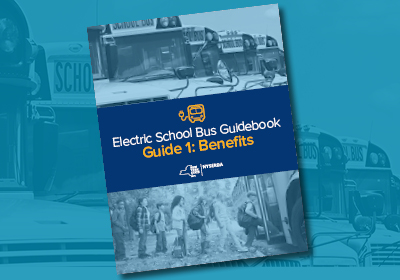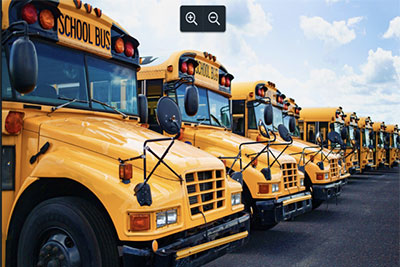How to Start Electrifying Your Fleet
Preparing for a 100% zero-emission school bus fleet by 2035
The Path to Electrifying Your School Buses
Years 1-3: Initial Phase | Plan and Get Your First Electric School Buses (ESBs)
- Outline your fleet electrification plan. Developing a plan for vehicle and charging equipment needs that includes cost estimates, implementation timelines, funding opportunities, and workforce development opportunities is an important first step for school districts. NYSERDA can help school districts partner with a FlexTech contractor to develop a fleet electrification plan. Once completed, school districts are eligible for additional charging voucher funds.
- Connect with your utility: Transitioning to an all-electric bus fleet requires investments in charging infrastructure and potentially the electric grid. Engaging your utility
 early on to assess grid capacity and whether an electrical upgrade is required is an essential step to fleet electrification planning.
early on to assess grid capacity and whether an electrical upgrade is required is an essential step to fleet electrification planning. - Purchase your first electric buses and chargers: Start small - most school bus depots have enough capacity to electrify 1-2 buses today without major infrastructure upgrades. This gives districts an opportunity to become familiar with electric bus maintenance and route planning prior to converting to an all-electric fleet. Significant incentives and funding are currently available for districts to purchase their first ESBs or get technical assistance with fleet electrification planning.
Years 4-11: 2027-2035 | Scaling Up
- Revisit your fleet electrification plan: With technological advances expected throughout the transition, it is a good practice to revisit your plan and ensure your plan reflects available technologies and your current fleet and routing information.
- Build your ESB fleet: Electric buses are the new status quo and only zero-emission buses will be available from 2027 on. With a fleet electrification plan and experience operating one or more ESBs, school districts are procuring more zero-emission buses as they work toward the final 2035 deadline of 100% ESBs.
- Capital projects and charging depots. Chargers should be added to existing depots, and necessary infrastructure and site upgrades should be included in any planned or upcoming capital projects.
Year 12: 2035 and Beyond | 100% ESB Fleets Accomplished
- Decommission fossil fuel-powered buses: All diesel and gasoline school buses must be replaced by 2035 for a full transition to an electric bus fleet. Your last diesel and gas buses, which you may still be using for field trips, sporting runs and, other complex trips are able to be served by longer range ESBs and a more robust charging network.
- Celebrate: An all-electric school bus fleet will mean cleaner air for students and communities—and a major decrease in greenhouse gas emissions.
How To Get Started Today
-

Electric School Bus Guidebook
Get up to speed on the electric school bus basics, including their benefits, purchasing process, financial incentives, operations and maintenance, charging equipment, and more.Read More Electric School Bus Guidebook -

NYSBIP Incentives
Learn how school bus and charging vouchers can help reduce the cost of zero-emission buses and charging equipment for school districts.Read More NYSBIP Incentives -

FlexTech
Access technical assistance and expertise with your district’s ESB planning. NYSERDA offers cost-share support for districts completing a site-specific, targeted study on bus fleet electrification.Read More FlexTech
Sign Up for News and Updates
Ready to electrify your school district’s bus fleet? Stay up to date on ESB best practices, funding opportunities, and more.
Stay Connected
